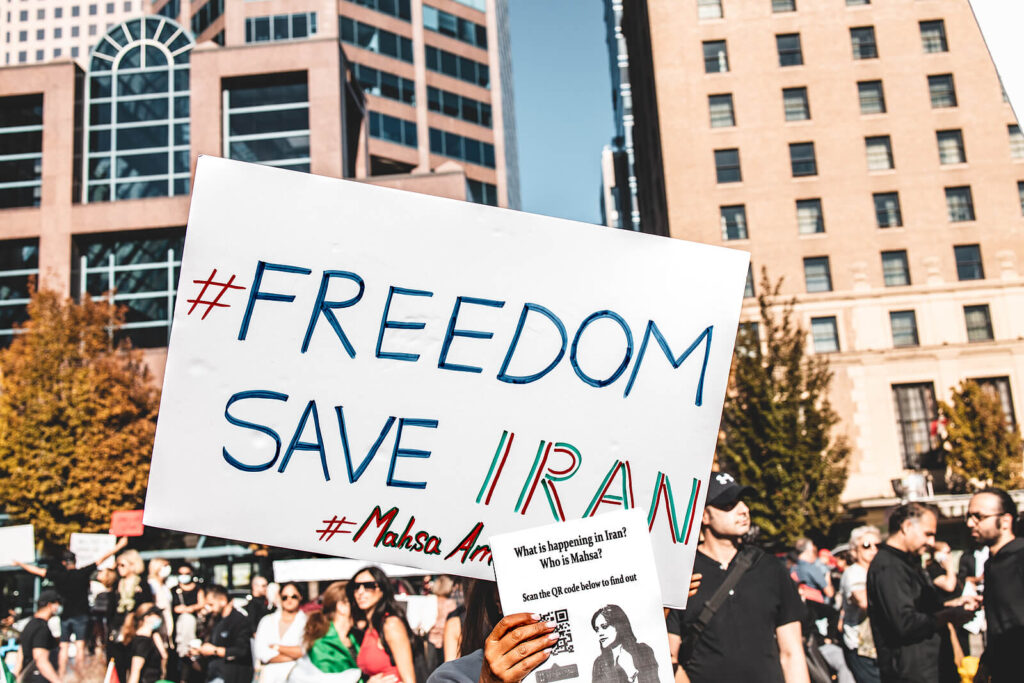As the relentless protests in Iran enter their sixth month, the government’s tactics are shifting to a recurring pattern of violence and intensive crackdown against the physicians and nurses treating the wounded protesters. To date, more than 750 protesters have been killed and several thousand arrested with many facing torture and execution. The merciless regime thugs have targeted all members of society, including women and children.
According to Amnesty International’s statement on Feb. 24, Dr. Ebrahim Rigi died at a police station within an hour of his arrest by plain clothes security forces. Dr. Rigi was “beaten upon arrest in the street” and “initial forensic assessment of his body points to subsequent beatings while in custody at the police station.” In his last social media posting, Dr. Rigi emphasized that he was not afraid of death or execution, but rather said he would continue to help the wounded protesters who launch massive anti-regime protests every Friday in Baluchistan.
Last December, Dr. Aida Rostami disappeared in the capital city of Tehran, while she was collecting items for medical aid for the wounded protesters. According to Iranian authorities, she died after falling from a bridge. Her family, however, discovered signs of torture and sexual abuse on her body, including stitches on her eyelid where she had been enucleated, the surgical removal of the entire eyeball.
Regime aims to cover up evidence of torture
Reports from human rights activists state that dozens of Iranian physicians have been arrested, but that number could be higher. In one account, a hospital director coordinated with security forces to systematically alter the causes of death so as to cover up the fact they were murdered by regime agents. Soon after, the Islamic Revolutionary Guards Corp (IRGC) members started to replace the hospital staff to quickly monitor medical staff and wounded protesters in order to conceal its atrocities. In other accounts, security forces searched a hospital for injured protesters, to threaten their families and direct staff to withhold treatment.
Similar to the case of Mahsa Amini killed in custody that sparked the nationwide uprisings since last September, Amnesty International reports that the Iranian authorities “tried to pressure Ebrahim Rigi’s family to bury him without an autopsy and gave them contradictory information about the circumstances of his death to evade responsibility, including by blaming his death on a heart attack.”
The murderous regime in Tehran fears the irreversible movement for change. This movement has sustained its momentum and evolved over the last six months — despite systematic killings and state sponsored concealment efforts, including violations of international laws, when it comes to the protection of the medical teams tending to the wounded protesters.
In October 2022, Dr. Hossein Kermanpour, head of the Emergency Department at Sina Hospital in Tehran, was fired after he exposed how the IRGC shot tear gas at the hospital. In his tweet he said, “Do they not know that even the most brutal regimes in history have never fired tear gas into a hospital enclosed space? But they did. Let this be recorded for the sake of history.”
Dr. Rostami, Dr. Rigi and many of their colleagues bravely upheld their Hippocratic Oath as codified by the Geneva Convention and implemented by the Red Cross since 1948 because they see how the Iranian people are engaged in an asymmetric war with the regime in power.
A rejection of dictatorships – past and present
Through guns, bullets and violence against protesters and their families on all fronts, including disinformation campaigns, the regime aims to stifle the nascent revolution. The Iranian people inside Iran have consistently rejected all forms of dictatorship, with slogans such as, “reformers, hardliners, the game is over.”
One of the most piercing chants that shatters the regime’s efforts at its core is the slogan, “death to the oppressor, be it the shah or supreme leader.” Such slogans are shouted on the streets and written on banners and walls. Iranians’ insistence on this powerful slogan is based on lessons learned from over a century-long struggle for freedom of a nation.
World leaders must pay close attention to such slogans to recognize the authentic and credible voice of change in Iran today. Although there are many loud voices in the Iranian diaspora with differing opinions on the future of Iran, the focus should remain on what the people inside Iran are calling for: an overthrow of the regime in favor of a secular, democratic Iran.
The international community can honor Dr. Rigi and Dr. Rostami, along with hundreds of others who have paid the ultimate price to keep the message of change alive, which is the rejection of all dictatorships of the past and present.







